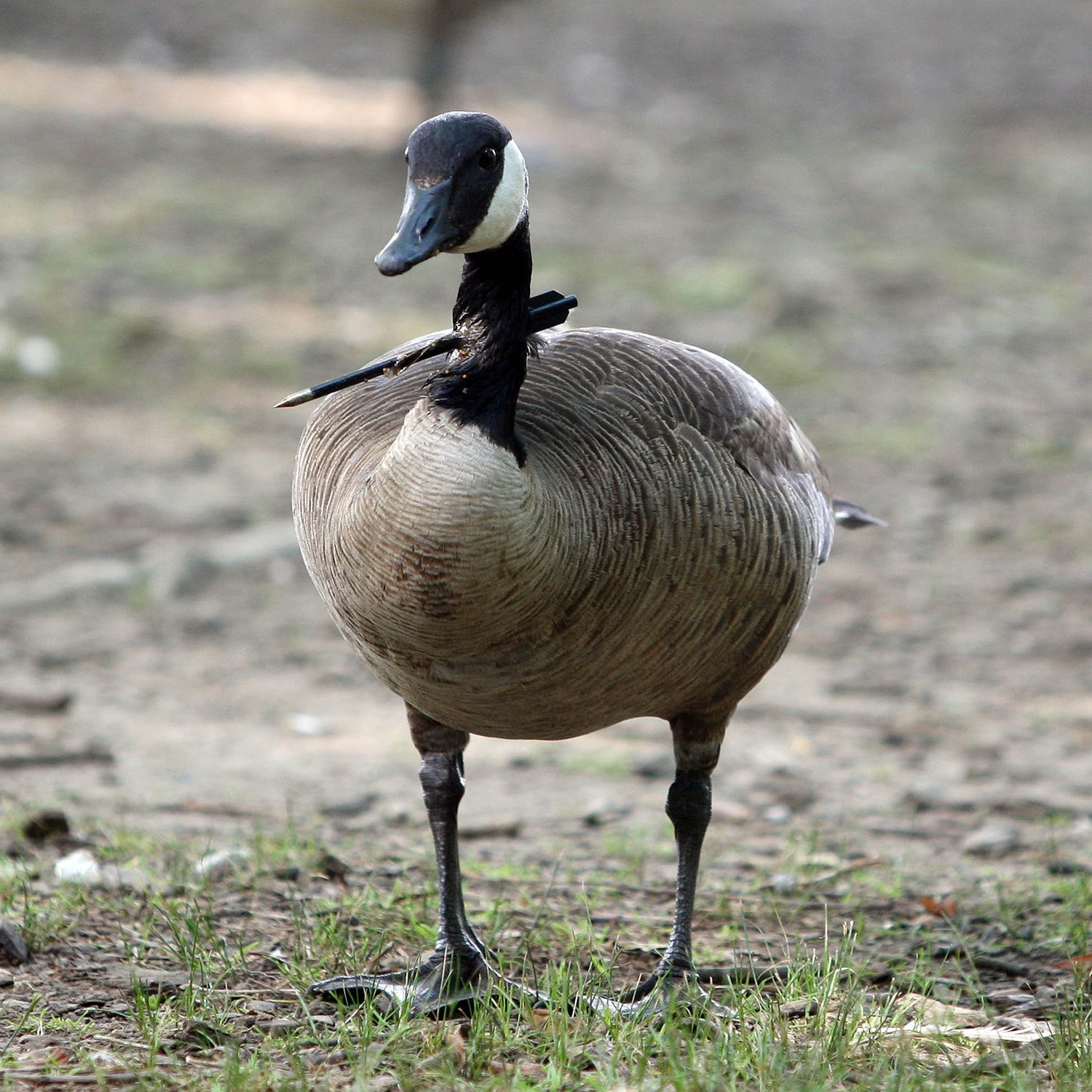On the afternoon of January 15, 2009, minutes after U.S. Airways Flight 1549 departed New York City’s LaGuardia Airport, Captain Chesley Sullenberger’s plane collided with a flock of geese at 3,000 feet. The engines of the Airbus A320 were instantly disabled, and Sullenberger was forced to perform an emergency landing on the Hudson River. The perilous maneuver, which ended with the safe evacuation of everyone on board, has since entered aviation lore as the “Miracle on the Hudson.” Sullenberger was celebrated as a national hero and is currently played by Tom Hanks in Sully, a film that has grossed more than $100 million domestically.
Safe to say, the whole business turned out better for Sullenberger than it did for the geese.
The birds that wound up pureed inside the Airbus A320’s turbines were not the only ones to suffer misfortune. More than one year later, I witnessed a bizarre series of events that began with a single act of violence upon an innocent New York City goose, and eventually its entire flock. Euripides claimed that the sins of fathers will be visited on their children: so too can the transgressions of one gaggle return to haunt another.
The accidental transgressions of one gaggle can return to haunt another.
During the summer of 2010, I held a seasonal job with New York City’s Department of Parks and Recreation as an urban park ranger. The bulk of my time was spent “on patrol” in Brooklyn’s Prospect Park, which essentially meant I was paid to take long walks. Sometimes I chastised park visitors for setting up their Webers in non-grilling-designated areas or orchestrated the removal of a dead raccoon. Beyond that, the only interruptions to my extended constitutional came in the form of programs, led by me or one of my fellow rangers, that taught visitors to discern the difference between red and white oaks or how to recognize the call of an agitated red-winged blackbird.
In mid-June, a park patron discovered a Canada goose with a crossbow bolt lodged in its neck. Both ends of the arrow were visible, so that the wounded bird looked like it was wearing one of those “Look-at-me-I’m-impaled” Halloween accessories.
It was the latest of a string of unsettling incidents that threatened to tarnish Prospect Park’s image. The previous summer, cow tongues were found nailed to the trunks of several trees in Peninsula Meadow. Around the same time, outside a cemetery a few blocks from the park, someone had constructed a shrine featuring rum, candles, and a severed pig’s head. A few months later, there were reports of chicken heads floating in Prospect Park Lake.
While the previous discoveries were suspected to be part of an occult ritual, this explanation felt less plausible for our semi-assassinated goose. Was this perhaps the work of a disgraced aeronautical engineer, bent on revenge for the almost-disaster of Flight 1549? Whatever the cause, four of us were sent to relieve the animal of its burden.
When we arrived at the scene, however, we weren’t sure the creature needed any rescuing. Contentedly socializing with the rest of its flock on the southern shore of the park’s 55-acre lake, this Canada goose appeared to be doing normal Canada goose things, save for occasionally trying to pick at the nine-inch projectile skewering its windpipe. The latter detail had been enough to motivate a crowd of onlookers, including several news reporters. Members of the media had already christened our goose “Sticky” and, more morbidly, “Target.”
We had one hand net between the four of us. The plan was for two rangers to provide distraction while the net-bearer would blindside the bird, trap it, and secure its head while another ranger yanked out the arrow and bandaged the wound. This had not been part of our training. With news crews and small children looking on, I worried that we were about to transform an idyllic summer morning in the park into some lurid Cormac McCarthy fantasy: geysers of blood, ghastly honks, branta Canadensis moribundus…
A stealthy approach was impossible. The goose always seemed to be surrounded by at least 20 other birds. As soon as one got spooked, the entire flock would speed-waddle to another section of the embankment. After a few failures, one goose instigated a migration to the middle of the lake. I watched Sticky alight on the surface of the water and turned in time to catch a woman from a local paper shaking her head.
This process, I’m ashamed to admit, went on for days. As , so did the pressure that the situation be resolved. At one point, we even attempted a water capture, making use of an ancient dinghy skippered by an equally ancient veteran of the park maintenance crew. Once we reached the geese, it wasn’t long before one of the birds sensed that our generous offer of breadcrumbs came with an ulterior motive and inspired the whole group to take flight and relocate to the other end of the lake.
“Maybe you guys should wait for molting season,” our captain advised.
No need, it turned out. Less than a week after the incident was first reported, a goose was spotted with a conspicuous wound on its neck, and, crucially, no arrow. Sticky had miraculously become unstuck.
To the best of anyone’s knowledge, the arrow had fallen out on its own—or perhaps the afflicted creature, grown weary of the spotlight, had managed to pick it out. Either way, this was that spread quickly on the local blog circuit. While the whole episode didn’t exactly make the Urban Park Rangers look like animal rescue virtuosos, a lot of people had been rooting for Sticky, and we were the good guys. “Without them trying to capture Target, I don’t think that arrow would have come loose,” one park patron told the .
Then, a few weeks after the issue was resolved, Sticky went missing.
Since the bird’s celebrity had waned once it lost its distinguishing feature, this disappearance might have gone unnoticed—except all the other geese had also vanished. Molting season had arrived, so flight was out of the question. On an embankment near where we had attempted our first corralling, there were ominous clusters of goose feathers in the grass.
“Where’d all the geese go?” one park regular asked. He’d shown up with an entire trash bag’s worth of breadcrumbs that were now rendered useless. But we were as clueless as he was.
The answer came several days later, when, like everyone else, we learned about the fate of the vanished geese in a . I’m sorry to report that the second goose mystery of the summer had a less cheery resolution than the first.
During the predawn hours, agents carrying out a directive from the U.S. Department of Agriculture had herded all resident Canada geese into crates and gassed them with lethal quantities of carbon dioxide. Ever since the near-catastrophe of U.S. Airways Flight 1549, there’d been extensive (but largely clandestine) efforts to cull goose populations deemed perilously close to airports. The previous summer, according to the Times report, 1,235 geese were rounded up and killed in 17 sites around the city that fell within a seven-mile radius of a major airport. This year, Prospect Park’s geese were the unlucky chosen.
Perhaps galvanized by the brief, wondrous life of Sticky, a number of locals expressed their anger about the abrupt de-goosing of their park. There was a protest outside New York City Hall, with activists waving slogans like “Give Geese a Chance” and “I Love Geese + I Vote.” The birds, some argued, posed no threat to air traffic security since they weren’t migratory. Others objected that the park lay outside the seven-mile safety zone. Then there were those who felt that the most insidious aspect of the affair was that the public had been kept in the dark.
Of course, so had we. (Seasonal employees, it turns out, aren’t very high on the bureaucratic totem pole.) But some bereaved park-goers were incredulous that we hadn’t known about the impending massacre.
“There’s blood on your hands,” someone screamed at me one afternoon as I untangled a fishing wire from a lakeside tree. A few days later, as I watched a group of mallards circle a sunlit spot on the boathouse pond, a young father strolled his offspring past and casually inquired if I planned to murder these birds as well.
On the whole, however, such instances were rare, and the season’s end was as tranquil as its beginning. When members of the park community organized a vigil for the geese that had been disappeared, however, I felt no great urge to attend. Because you never know when a peaceful environment might turn hostile.


